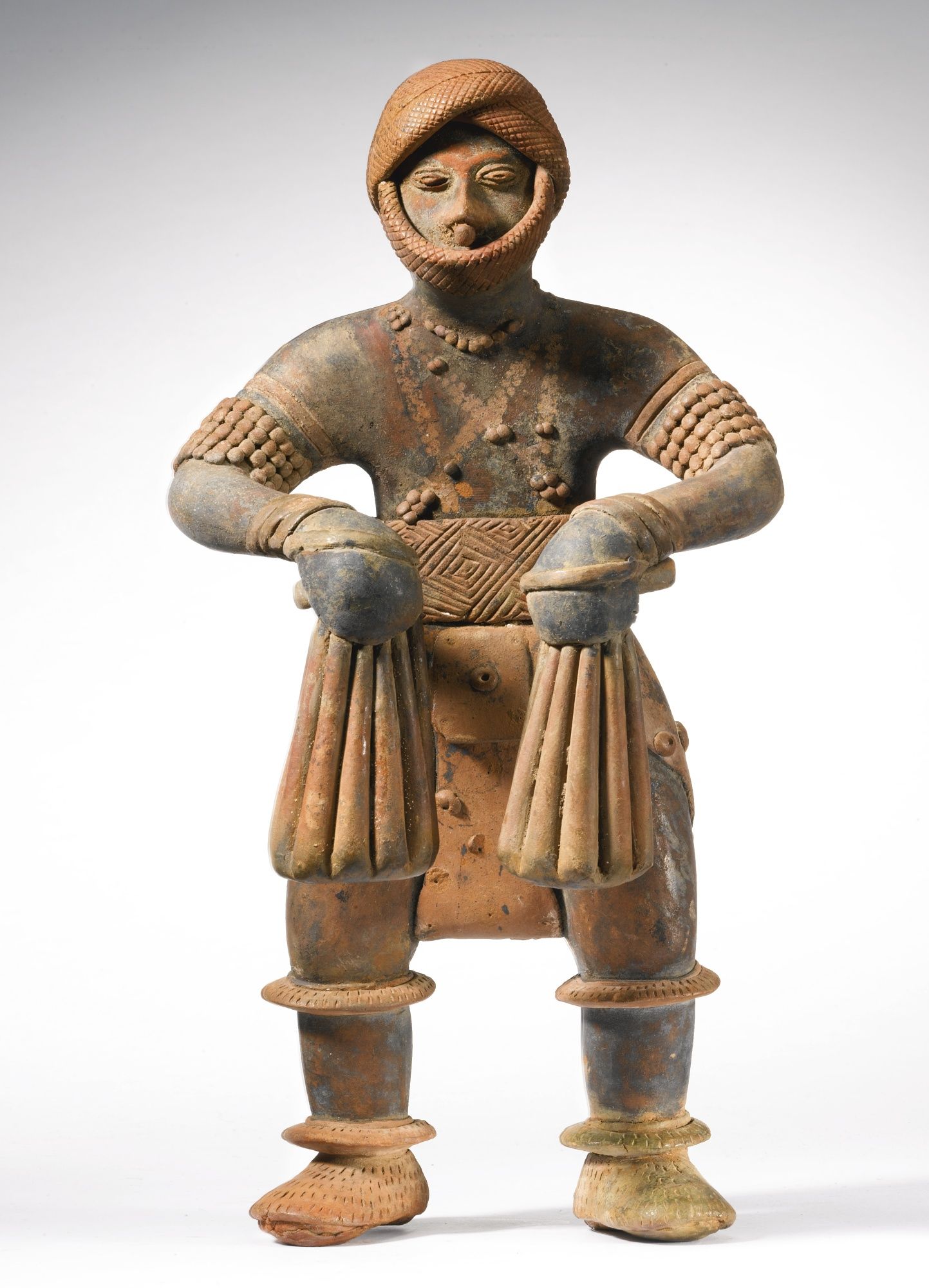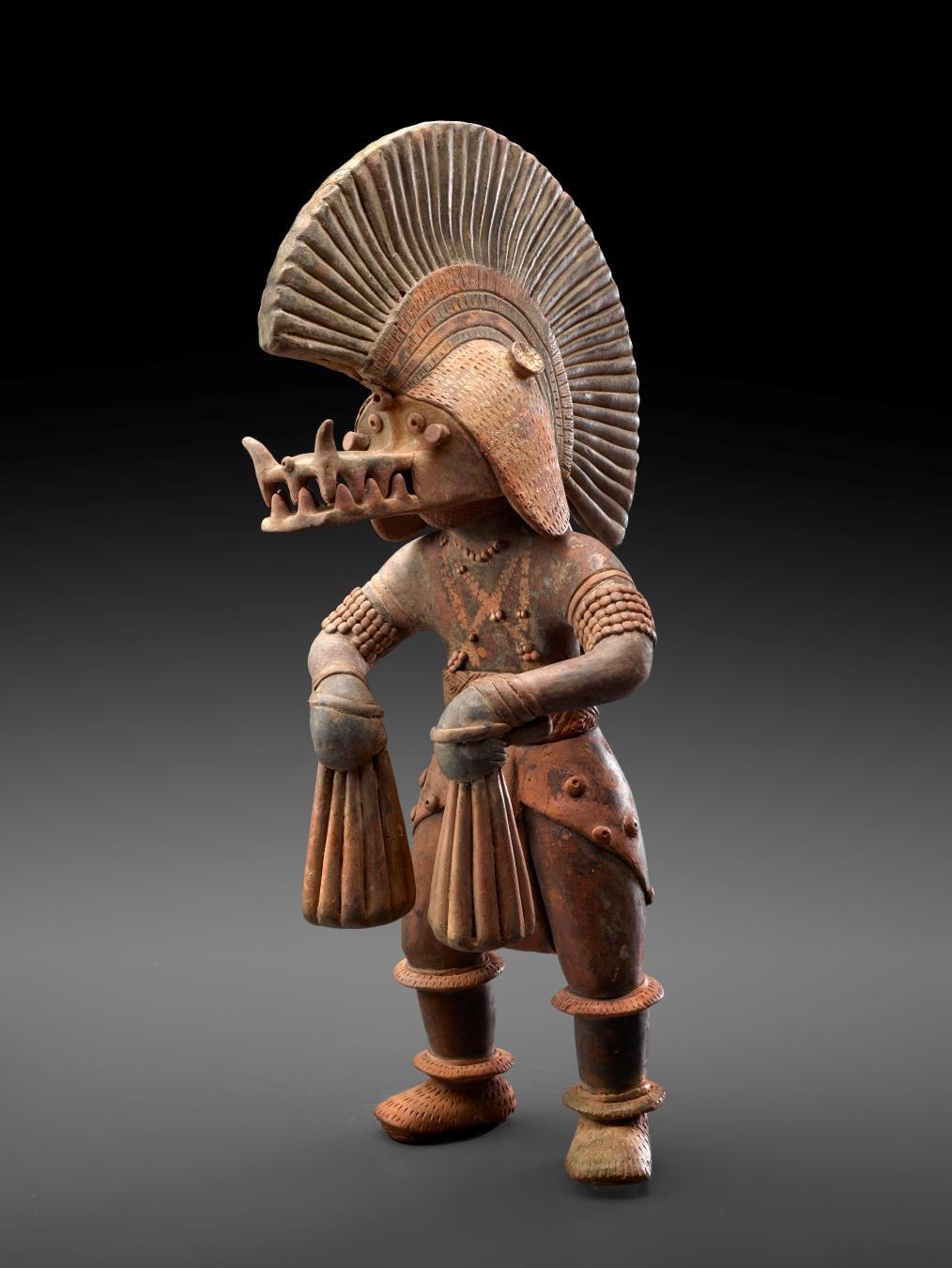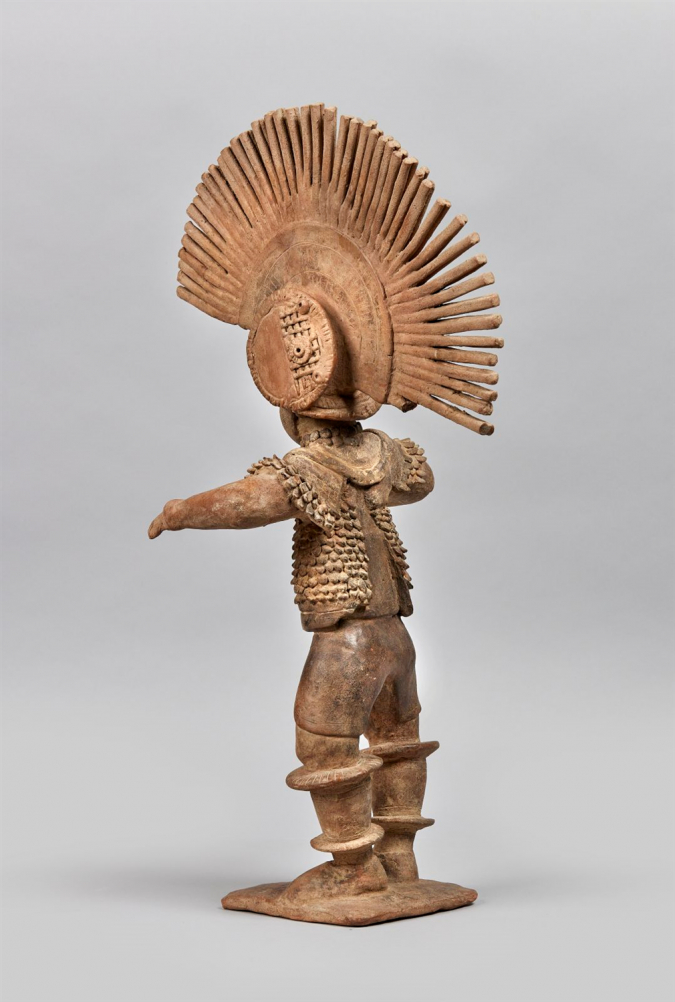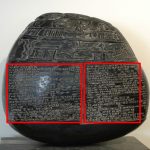Exhibited at the Museum of Fine Arts, Houston, is a Mexican dancer from the Colima Culture (300 BC–300 AD) who wears a removable crocodile helmet.

The artifact titled “A dancer with a removable crocodile helmet from Mexico,” originating from the Colima culture and dating between 300 BC and 300 AD, is a remarkable piece of pre-Columbian art currently on display at the Museum of Fine Arts in Houston. This fascinating sculpture provides a unique glimpse into the rich cultural and artistic traditions of ancient West Mexico, specifically the Colima region, known for its distinctive ceramic works.
The Colima culture, part of the broader group of West Mexican civilizations, flourished in what is now the modern-day state of Colima. This culture is particularly renowned for its hollow ceramic figures, often depicting humans, animals, and hybrid beings with remarkable realism and detail. These ceramics were typically placed in tombs as part of burial offerings, intended to accompany the deceased in the afterlife and to serve as guardians or representations of the individual’s status and activities during their lifetime.

The dancer with a removable crocodile helmet is an exemplary piece of Colima artistry. The figure likely represents a shaman or a ritual performer, as indicated by the intricate costume and the presence of the crocodile helmet. In many Mesoamerican cultures, crocodiles were revered as powerful symbols associated with water, fertility, and the underworld. The ability to don and remove the crocodile helmet suggests a transformation or the assumption of a different identity during rituals, highlighting the shaman’s role as an intermediary between the earthly and spiritual realms.
The craftsmanship of the sculpture is evident in the detailed rendering of the dancer’s attire and the lifelike posture. The figure’s dynamic pose, with one leg raised and arms positioned as if in mid-movement, captures a sense of fluidity and motion, characteristic of Colima ceramic figures. The removable helmet, crafted to resemble a crocodile’s head, is particularly striking, showcasing the artisan’s skill in creating a functional yet symbolic accessory. The crocodile’s features are meticulously detailed, with an emphasis on the eyes, teeth, and textured skin, enhancing the overall realism of the piece.

This artifact’s presence in the Museum of Fine Arts in Houston allows visitors to appreciate the complexity and significance of Colima culture. It serves as a testament to the region’s sophisticated artistic traditions and the cultural importance of ritual and symbolism in daily life. Exhibiting such artifacts in museums provides valuable educational opportunities, fostering a deeper understanding of ancient civilizations and their contributions to human history.
Furthermore, the display of the dancer with a removable crocodile helmet underscores the interconnectedness of Mesoamerican cultures. Similar themes of animal symbolism, shamanistic practices, and ritual performance can be found across various pre-Columbian societies, suggesting shared beliefs and cultural exchanges throughout the region. This artifact, therefore, not only represents Colima culture but also contributes to the broader narrative of Mesoamerican heritage.

The careful curation and presentation of this sculpture in the Museum of Fine Arts in Houston ensure its preservation and accessibility to the public. Museums play a crucial role in protecting and showcasing cultural heritage, allowing contemporary audiences to engage with the artistic achievements of ancient peoples. Through such exhibitions, the legacy of the Colima culture and its artistic innovations continue to inspire and educate future generations.
In conclusion, the dancer with a removable crocodile helmet from the Colima culture, now displayed at the Museum of Fine Arts in Houston, is a remarkable artifact that encapsulates the artistic prowess and cultural depth of ancient West Mexico. This sculpture not only reflects the sophisticated craftsmanship of Colima artisans but also offers insights into the ritualistic and symbolic practices of their society. By preserving and exhibiting such pieces, museums contribute to the ongoing appreciation and understanding of our shared human heritage.










